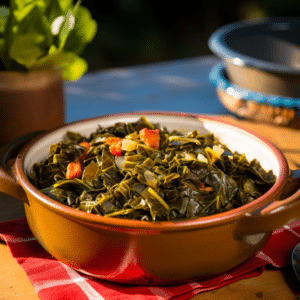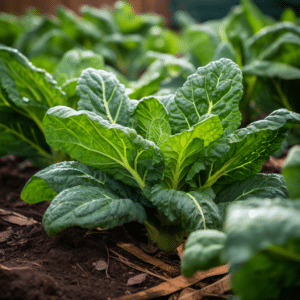Collard greens, a staple in Southern cuisine, are a hearty, nutritious vegetable that thrives in cooler weather. Planting collard greens in your garden can provide you with a fresh, healthy supply of this leafy green throughout the year. In this guide, we’ll delve into everything you need to know about planting and nurturing collard greens.
Understanding Collard Greens

Collard greens, also known as Brassica oleracea, are a part of the cabbage family. They are a cool-season crop, which means they grow best in the spring and fall. Collard greens are known for their large, dark-colored, edible leaves and their robust flavor.
These leafy greens are packed with vitamins and minerals, including Vitamin K, Vitamin A, Vitamin C, and calcium. They are also high in fiber, making them a healthy addition to any diet.
Choosing the Right Variety
There are several varieties of collard greens available, each with its own unique characteristics. Some popular varieties include Georgia Southern, Morris Heading, and Vates. Georgia Southern is known for its sweet flavor and heat tolerance, while Morris Heading has a more compact growth habit. Vates is a slow-bolting variety that is resistant to yellow virus.
When choosing a variety, consider your climate and the specific characteristics you desire in your collard greens. Some varieties may be more suited to your gardening conditions than others.
Planting Collard Greens
Planting collard greens is a relatively straightforward process. With the right preparation and care, you can have a thriving collard green garden in no time.
When to Plant

Collard greens can be planted in the spring or fall. For a spring planting, start your seeds indoors 6-8 weeks before the last expected frost. For a fall planting, start your seeds indoors 6-8 weeks before the first expected frost.
Collard greens prefer cooler temperatures, so avoid planting them in the heat of summer. They can tolerate frost, making them a great choice for fall gardens.
Preparing the Soil
Collard greens prefer well-drained, fertile soil with a pH between 6.0 and 7.0. Before planting, prepare your garden bed by removing any weeds or debris. Add compost or a slow-release fertilizer to enrich the soil and promote healthy growth.
Ensure the soil is loose and well-aerated to allow the roots to spread and absorb nutrients effectively. If your soil is heavy clay or sandy, consider amending it with organic matter to improve its texture and fertility.
Planting the Seeds
Plant your collard green seeds 1/4 to 1/2 inch deep in the soil. Space the seeds about 1 foot apart in rows that are 2-3 feet apart. This will give the plants plenty of room to grow and spread.
Water the seeds thoroughly after planting and keep the soil consistently moist until the seeds germinate. Once the plants are established, they can tolerate some drought, but regular watering will yield the best results.
Caring for Collard Greens

With the right care, your collard greens will thrive and produce a bountiful harvest. Here are some tips for caring for your collard greens.
Watering and Fertilizing
Collard greens prefer consistently moist soil. Water your plants regularly, especially during dry periods. Avoid overwatering, as this can lead to root rot and other diseases.
Fertilize your collard greens with a balanced vegetable garden fertilizer to promote healthy growth. Follow the manufacturer’s instructions for application rates and frequency.
Controlling Pests and Diseases
Collard greens can be susceptible to a variety of pests and diseases, including cabbage worms, aphids, and clubroot. Regularly inspect your plants for signs of damage and take action at the first sign of trouble.
Use organic or chemical pesticides as needed to control pests. If your plants are affected by a disease, remove and dispose of the infected plants to prevent the disease from spreading.
Harvesting Collard Greens
Collard greens can be harvested as soon as the leaves are large enough to eat. Simply cut the leaves off at the stem, leaving the center of the plant intact to continue producing leaves.
For the best flavor, harvest collard greens in the morning when they are still cool. They can be stored in the refrigerator for up to a week.
Conclusion
Planting collard greens can be a rewarding experience, providing you with a fresh, nutritious vegetable right from your own garden. With the right care and attention, you can enjoy a bountiful harvest of this hearty, flavorful green.
Whether you’re a seasoned gardener or a beginner, collard greens are a great addition to any garden. Start planting today and enjoy the fruits of your labor in no time.